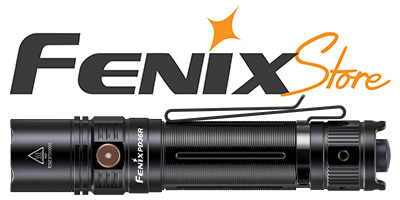Thank you for the link so apparently there's not a huge difference between neutral and warm?
There sure is to me! Under the particular camera white-balance setting that was used (which does majorly effect how the colors in photos turn out), the photo of the tree lit up by the warm white Quark looks positively orange, while right above the somewhat similar photo of the tree lit up by the neutral white HDS high-CRI Clicky at least shows some green.
Then again, much like CRI does NOT tell us a whole lot about the actual accuracy of color rendering in practice (especially with low CCTs, where CRIs are typically massively inflated), CCT doesn't tell us everything about the tint of an LED and how it affects all of the visible hues in various ways. The only way to really know is to use the flashlights, although we can get some idea, as well as analyze what we're seeing in a quasi-objective manner, by looking at the spectral power distribution curves of the LEDs in question, like I did in the big post that I referenced earlier. I had a lot of fun doing that, so let's do it some more!

:duck:
I'll start by taking another critical look at the Luxeon Rebel LXM3-PW51 (4000K CCT, 85 CRI) LED used in my high-CRI ZebraLight H51c. Here is its emission spectrum:

Although its spectral curve is a noticeable improvement over those of typical low-CRI LEDs, it still has several flaws. The main ones are that although much improved it still has too little cyan, and it also has a bit too much yellow. Subjectively, to my eyes this is only slightly visible in the form of a mild cream-colored tint in the beam, and has little effect on color rendering once my eyes have adjusted to it. Otherwise, purples are spot on (excellent blue-red balance), greens and browns look right (excellent green-red balance), and blues and oranges are neither over- nor under-emphasized. If Lumileds could only trade the excess yellow for additional cyan (which is extremely difficult to accomplish, I would imagine), this LED's spectrum would be practically perfect (note that this would probably happen to raise its CCT to somewhere in the neighborhood of sunlight, which reinforces how right it gets everything else). Due to this LED's excellent overall performance in practice (to my eyes, compared with sunlight), as well as its verifiable flaws that match what we can see on the graph, I think that its spectrum would make a good baseline for comparison with other LEDs, including those with higher CRIs.
With that in mind, now let's look at the spectral curve of the LED used in the HDS high-CRI Clicky (HDS EDC-E1S-HighCri), which is the Seoul Semiconductor Z-Power P4 S42180 (4000K CCT, 93 CRI):
It looks rather similar to the 85 CRI Rebel's spectral curve at first glance, doesn't it? When we take a closer look, we can see that it is slightly improved in the cyan range, which is good because that seems to be difficult to achieve. However, since it has the same CCT, then something else has to give, right? Unfortunately, the relatively benign yellow peak (in practice) of the Rebel has been traded for an orange-red peak, which means of course lots of additional orange and red relative to everything else. :shakehead Whatever the reason for its CRI being substantially higher, its spectral curve looks worse to me. :thinking:
Now, I can't fairly judge the S42180 without using it myself--looking at real objects with its light using my own eyes--but in all of the photos I've seen (should be taken with a grain of salt because they're only photos), orange and red do appear to be noticeably and consistently emphasized. Some folks may prefer this "warm" tint (even though this LED measures as neutral white overall), and perceive its color rendering to be richer and more aesthetically pleasing as a result, but I suspect that in reality it's not quite as well balanced as the LXM3-PW51, and therefore not as accurate in color rendering relative to sunlight (the S42180's higher CRI notwithstanding--so much for CRI :ironic

.
Since there appears to be some traction in the area of accurate color rendering in flashlights these days (I hope! :bow

, let's examine the spectral curves of a couple of other likely candidates for high-CRI flashlights, starting with the Nichia NS6L183A-H1 (3500K CCT, 92 CRI):
It looks very similar indeed to the spectral curve of the S42180, except that there is significantly less blue and cyan, which helps explain its lower CCT. So basically what is wrong (I think) about the S42180 is even more wrong about the NS6L183A-H1.

While it may potentially garner accolades for its CRI of 92, this LED would seem to make everything look orangish. That's OK if that's what you prefer, but the high CRI in this case has little to do with color accuracy; I guess it's probably better than other warm white LEDs that have lower CRIs, so there's that. As I've said before, CRI is inflated when dealing with low CCTs.
The real "Holy Grail" for those who consider sunlight the ideal light source for color rendering (like I do) is a high-CRI (not that CRI means much--let's say well-balanced instead) cool white (5000K CCT or a bit higher) LED. Well, what do you know? The Nichia NS6W183A-H1 happens to have a CCT of about 5000K (according to its
chromaticity coordinates) and a CRI of 92.

oo::twothumbs Could it be? Ultra-pure
white light with accurate color rendering?!

Let's find out--here is its spectral curve:
Wow, look at that practically flat portion from green to orange-red!

Not that the spectral curve of sunlight itself is flat (it actually peaks at shorter wavelengths), but at least this portion mirrors sunlight's corresponding slope pretty well--that's the good news. The bad news, unfortunately, is that there is too much blue! If more of that blue could be turned into cyan, then this might be the practically perfect LED, much like the example I gave earlier of trading some of the LXM3-PW51's yellow for cyan. In this light (so to speak

), comparing these two LEDs to each other, the NS6W183A-H1 should have a more accurate white and grayscale (relative to sunlight), while the LXM3-PW51 probably renders some colors more accurately due to its better blue-red balance, which brings us back to a point I made in my big post in the other thread--that 4000K CCT is where the most accurate overall color rendering can be achieved with today's LED technology (everything is still a compromise).
But regardless, what Nichia has been able to accomplish with the NS6W183A-H1 is very interesting (although I think that I still prefer the LXM3-PW51 overall...maybe :thinking

, and bodes well for what can be accomplished in the near future. :thumbsup: I'd seriously consider buying any flashlight that uses it--who knows, it may end up being my favorite LED, but I'd have to use it for a while first to really know.





 Let's find out--here is its spectral curve:
Let's find out--here is its spectral curve:







